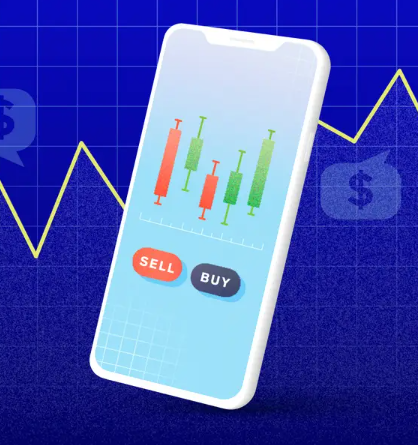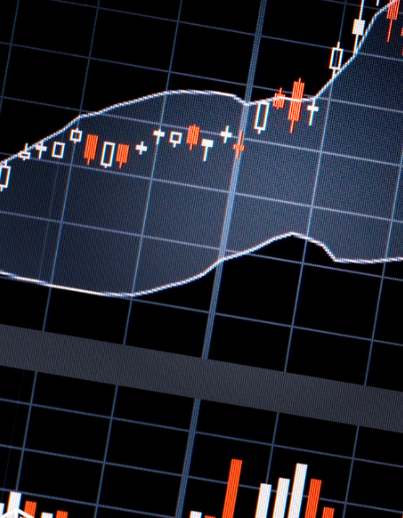A Beginner’s Guide to Price Action Trading

Price action trading is a popular strategy among traders, especially in markets like forex, where high liquidity makes it easier to capitalize on price movements. This method focuses on analyzing the movements of an asset’s price using only price charts, without relying on additional technical indicators. In this blog, we’ll walk you through the core principles of price action trading and show you how to incorporate it into your trading strategy.
What is Price Action Trading?
Price action trading is the practice of making trading decisions based on the price movements of an asset. This strategy is rooted in the belief that all necessary information is reflected in the price itself, making it unnecessary to rely on external indicators. Traders using this approach focus on understanding and interpreting past price movements to predict future market trends.
Unlike traditional trading methods that may use economic reports, news, or complex indicators, price action trading is centered on observing and interpreting the price chart. All of the factors influencing price—such as market sentiment, economic events, and trader behavior—are already incorporated into the price action, allowing traders to make informed decisions based on real-time data.
Key Concepts of Price Action Trading
Price action trading relies on understanding market trends, patterns, and behavior. Traders analyze charts to identify key price levels, trends, and potential reversals. The core idea is that price movements follow recognizable patterns, which can be studied to forecast future movements. The goal is to identify and act on these patterns in a timely manner.
- Trending and Non-Trending Markets: In price action trading, markets can be in an uptrend, downtrend, or sideways movement (range-bound). Understanding the market condition is key to determining the appropriate strategy.
- Uptrend: Higher highs and higher lows are characteristic of an uptrend. If the price fails to make a new high, it could signal the end of the trend.
- Downtrend: Lower highs and lower lows define a downtrend. If the price doesn’t create a new low, it may indicate that the trend is weakening.
- Sideways (Range) Market: When prices move within a specific range, trading opportunities arise at support and resistance levels.
- Price Patterns: Traders look for recurring patterns such as support, resistance, trendlines, and candlestick formations that can give clues about future price movements.
How Price Action Trading Works
In price action trading, the analysis focuses on the asset’s price movements over time. Traders use price charts, typically candlestick charts, which provide valuable insights into the market. Each candlestick represents the open, high, low, and close (OHLC) of a specific time period.
Key aspects of price action analysis include:
- Candlestick Patterns: Candles provide a visual representation of market sentiment. A bullish candle (green) closes higher than its open price, while a bearish candle (red) closes lower. Specific candlestick patterns, such as doji, engulfing, and hammer, can provide insights into market sentiment and potential price reversals.
- Support and Resistance: Price action traders pay close attention to areas where the price has previously reversed, known as support and resistance levels. These levels can indicate potential entry or exit points.
- Trendlines: Trendlines are drawn to connect the lows in an uptrend or the highs in a downtrend. They help traders visualize the market’s direction and assess potential breakouts or reversals.
Identifying Market Trends
The ability to recognize a market’s trend is essential in price action trading. Markets can be trending upward, downward, or moving sideways. The goal is to identify the trend early and ride it until a reversal is imminent.
- Uptrend: In an uptrend, the market creates higher highs and higher lows. When a price fails to make a new high, traders may begin to consider a potential reversal.
- Downtrend: A downtrend is characterized by lower lows and lower highs. When the market fails to form a new low, it could indicate the trend is losing momentum.
- Sideways Market: If the market moves within a range, traders look for opportunities to buy at support and sell at resistance levels.
Price Action Trading Strategies
- Trendline Trading: This strategy involves drawing trendlines to identify trends and potential entry points. Traders buy in an uptrend when the price pulls back to the trendline and sell in a downtrend when the price rebounds from the trendline.
- Breakout Trading: Traders look for breakouts when the price moves outside of a defined range, indicating a shift in market sentiment. A breakout could signal the beginning of a new trend, either upwards or downwards.
- Candlestick Patterns: Candlestick patterns such as engulfing patterns, hammers, and doji can signal potential reversals or continuation of trends. These patterns are often used in conjunction with support and resistance levels to make more accurate trading decisions.
- Inside Bar Breakout: After a breakout, traders may use the inside bar pattern to confirm that the price will continue in the direction of the breakout. This pattern indicates that the price is consolidating before continuing its move.
Benefits of Price Action Trading
- Simplicity: Price action trading is straightforward and does not rely on complex indicators. This makes it easier for traders to focus on the price movements themselves.
- Adaptability: Price action can be applied to any market, including stocks, forex, and commodities. It works well across different timeframes, making it suitable for both short-term and long-term traders.
- Timely Signals: Price action provides real-time signals, allowing traders to act on market conditions as they unfold. This is particularly useful in volatile markets where conditions can change rapidly.
Conclusion
Price action trading is a versatile and effective strategy for traders looking to profit from price movements. By focusing on price charts and understanding market psychology, traders can make more informed decisions based on what is happening in the market right now. Whether you are new to trading or have experience, mastering price action trading can improve your ability to identify trends, entry points, and potential market reversals.




